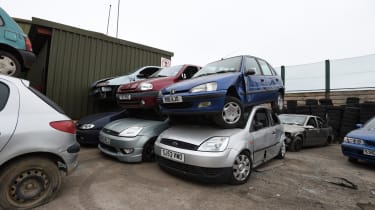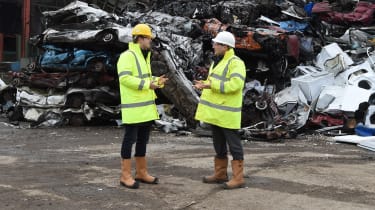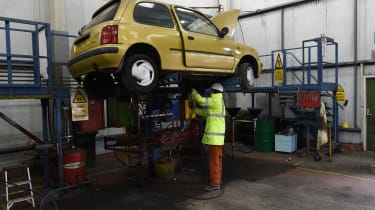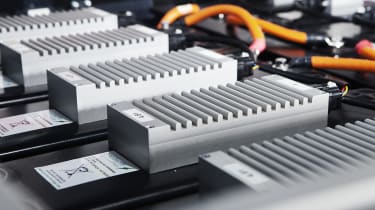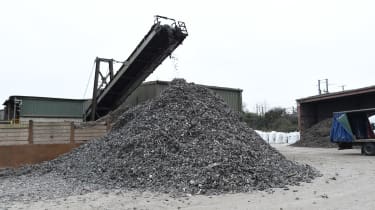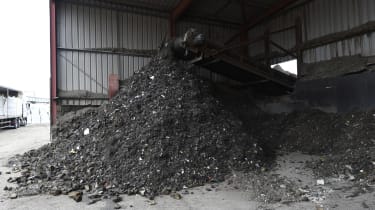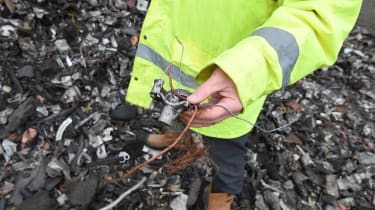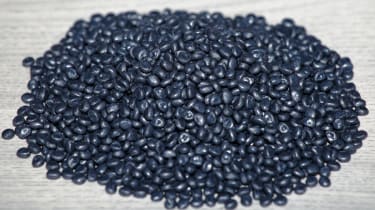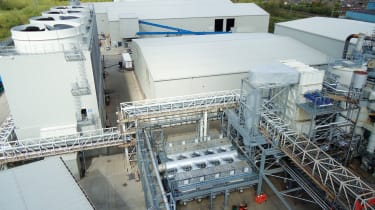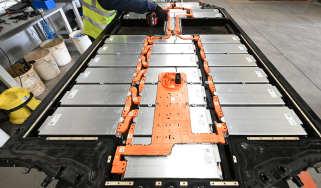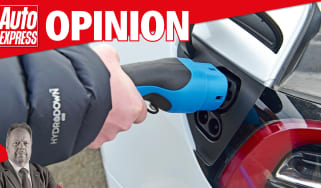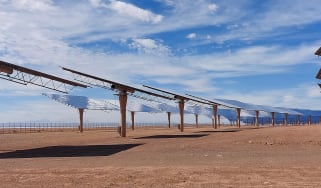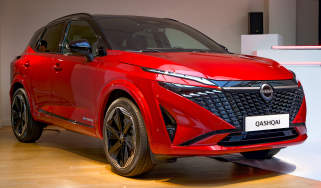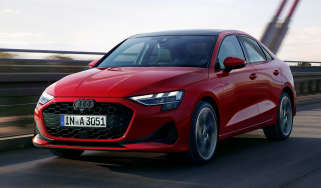Car recycling: how much of your old car is reused?
Legislation dictates that 95 percent of a car has to be recycled when it's scrapped; we follow the high-tech process...
We have all become more aware of our environmental impact over the years – for most of us, it’s become second nature to separate our paper, cardboard and bottles and recycle them responsibly, but what about recycling our cars? Have you ever wondered what happens when you scrap your car? Maybe you always assumed it would be merely crushed into a cube and left to the elements.
Actually, current government end of life vehicle (ELV) legislation surrounding the recycling of vehicles is more stringent than it used to be. In 2015, the target amount of a car’s weight that must be recycled was increased from 85% to 95%. This figure means that vehicles have one of the highest rates of recycling of any product, which is even more impressive when you also consider that the average car can be reused and go through an average of three to four owners in its lifespan.
Scrapping and recycling a car to these stringent standards can be a complicated process with multiple steps to make sure the vast amounts of complex materials can be separated and identified, while any hazardous waste is disposed of appropriately. ELV legislation is set to be reviewed by the UK and EU in 2022.
• How to scrap your car: all you need to know
The scheduled review comes in light of recent developments in electric vehicle technology and the push towards the ban on the sale of petrol and diesel vehicles by 2030. With electric vehicle battery waste set to increase in volume alongside rising demand for electric vehicles, the question of how to safely dispose of the lithium-ion batteries used in EVs is something that needs to be addressed.
In an effort to reduce car crime and keep tabs on the movement of scrapped cars, it became illegal to make cash payments for scrap cars following the Scrap Metal Dealers Act of 2013. You should never accept a cash payment for your scrap car, and should instead pay via bank transfer.
Reuse of parts
An important first step in the scrappage process is the harvesting of components that are still fit for use on other cars. Vehicles are stored at sites and then tested to see which parts still work and can be sold as spares. It’s a basic, but crucial part of sustainability – reusing eliminates the consumption of extra energy to process materials, unlike the recycling process. Parts are either ready to use or then refurbished and sold on to keep other cars on the road.
De-pollution process
Under the End of Life Vehicles Directive, when cars and vans weighing up to 3.5 tonnes are scrapped, they must be disposed of in an environmentally responsible way. At Authorised Treatment Facilities (ATFs) – of which there are around 1,500 in the UK – workers ensure that all hazardous waste in cars, such as oil, coolant and other car fluids as well as traditional batteries are drained. ATFs are the only centres legally permitted to dispose of scrap cars, as they are able to dispose of these materials correctly. Recycling centres with an ATF licence are then able to issue a Certificate of Destruction (CoD).
Can electric car batteries be recycled?
The money and energy it takes to recycle EV batteries means that many companies will only do so if it works out financially beneficial. The EU Battery Directive states that at least 50% of battery components must be recycled, which is a fairly easy target to achieve, given that the wiring and plastics within the battery packs is more simple to process.
The battery cells themselves are more difficult to recycle as they contain hazardous material that can pollute the environment. A simple solution to this is the reuse of old EV batteries with less capacity for other second-life applications. Volvo has been exploring the use of depleted EV battery packs as solar power storage systems and in other applications, proving the lifespan of these batteries extends further than their use solely for electric transport.
Big strides are being made to recycle the materials used within batteries, though. Waste management firm Veolia announced its first battery recycling plant in the UK in January 2022, while Tesla aims to recycle its used batteries to the point that mining for more precious metals (an environmentally damaging process) will become unnecessary.
Shredder
Once the car’s been made safe and had a CoD raised, it’s added to the scrap pile. From here, it’s broken up into small pieces according to the type of material using giant rotary hammers. EMR Group has eight sites where this is possible, and the biggest machine can shred a car every 15 seconds with water sprayed on to keep temperatures at a minimum. Once the pieces are small enough, they fall through a grate onto conveyor belts.
Magnets
The conveyor belt rolls the various pieces underneath magnets, which pull off the steel, leaving plastic and non-ferrous metals on the belt. Around 70 per cent of a car’s weight is steel, so this process retrieves around 10 tonnes a year.
• Cat D and Cat C cars: insurance write-offs explained
This is then recycled and returned to the foundry. The scrap steel industry is worth billions of pounds a year, and the UK was the biggest exporter of scrap steel in Europe in 2020. As steel is made to an international standard, it’s traded as a commodity, and after the recycled steel market in Spain and the east coast of America disappeared in the economic slump in 2008, Turkey is now the biggest importer of UK recycled steel.
Vacuum
With the steel piling up off the conveyor belt, the next process sees a high-powered vacuum remove the lighter materials. Foams, rubbers, fabrics and light plastics are all pulled off the recycling stream. While materials like these may have just been thrown into landfill previously, the high landfill tax cost of £96.70 per tonne of waste has acted as an incentive for scrappers to recycle every element they can and new methods have been developed to facilitate this.
Heavy media
Non-ferrous metals and heavy plastics remain on the conveyor, and are collected to be taken to another centre to be separated. A process known as heavy media is used to split the materials – by changing the density of water, operatives can dictate what floats and what sinks. This works well for aluminium, copper and any other metals (around five per cent of a car’s weight), but flotation won’t work for plastics because they’re made up of so many different chemicals. They used to go to landfill, but these days there’s an extra process, called plastic polymers.
Plastic polymers
Around 39 different types of plastics and polymers are used in car manufacturing. To avoid sending it to landfill sites like MBA Polymers, based in Worksop, Nottinghamshire, separate plastics and take them back down to their original properties, reconstituting as pure plastic pellets. These pellets can then be used to make new moulds.
However, despite these efforts, the vast majority of plastics extracted from vehicles at the end of their life are not recycled, or are down-cycled (meaning they are used in products of lower quality than before). Some manufacturers are trying to address this issue – the electric Renault ZOE, for example, uses seats made entirely out of recycled plastic.
Gasification
With plastics, steel and metals such as aluminium and copper now recovered and put back into the system, all that remains are the lighter materials taken out during the vacuum stage at the initial recycling site. These materials – such as foam, rubber and light plastics – used to go to landfill, but are now turned into gas. EMR teamed up with energy specialist Chinook to open up the hi-tech Oldbury plant in the West Midlands, where the materials are placed in a four-storey-tall rotating box which is heated up and converts them to gas. This gas is used to generate steam for electricity, with two tonnes of waste creating enough power to run the average house for a year.
A drive to get more cars recycled
The decision to scrap a car can be tinged with sadness, but perhaps it shouldn’t be when so much benefit comes from its parts and materials. Yet the reality is, fewer of us are now doing it.
• Can you trust new UK car sales figures?
The lower price of steel has encouraged people to export scrap cars to sell parts, while unofficial methods are causing problems for legitimate companies. EMR Group’s Graeme Carus told us: “There’s a cash ban for scrap, but it’s not enforced as well as it should be and has contributed to cars not coming through official channels.”
The Society of Motor Manufacturers and Traders has a free recycling take-back service to owners of end of life ‘orphan vehicles’ – cars whose maker is no longer trading – while brands such as Kia, Lexus and Renault have their own scrappage schemes to take cars back via dealers in return for a discount on your new car. These schemes mean cars are more likely to be scrapped via official channels, and manufacturers can be held accountable to make sure the scrapped car gets recycled.
